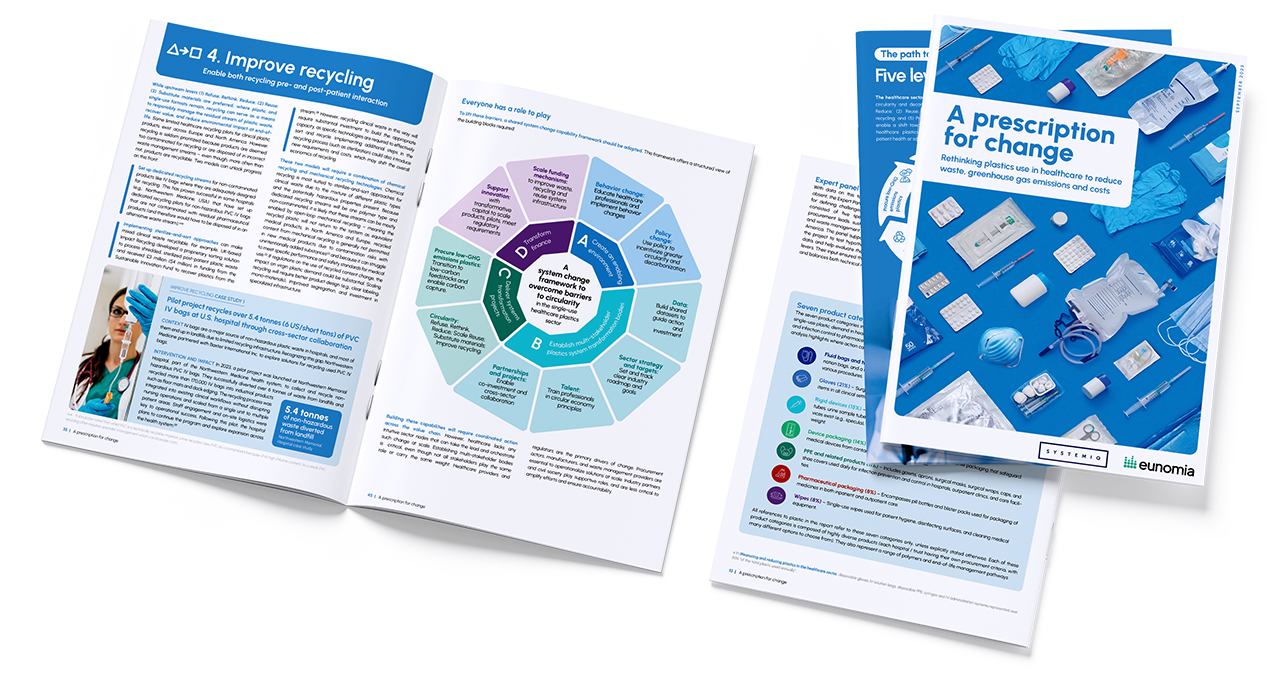- Share
A prescription for change
Innovation including research
Rethinking plastics use in healthcare to reduce waste, greenhouse gas emissions and costs
Date (DD-MM-YYYY)
13-09-2025 to 13-09-2026
Available on-demand until 13th September 2026
Cost
Free
Education type
Article
CPD subtype
On-demand
Description
How reducing single-use plastics in healthcare can cut emissions, save billions, and protect patient care
Plastics are essential to modern healthcare, enabling safe, sterile, and reliable care across hospitals, clinics, and community settings. From gloves and gowns to IV bags, packaging and rigid devices, they support infection prevention and patient safety. Yet their widespread single-use has major consequences: mounting waste, rising greenhouse gas (GHG) emissions and escalating costs.
‘A Prescription for Change: Rethinking plastics use in healthcare to reduce waste, greenhouse gas emissions and costs’, a new report from Systemiq and Eunomia, quantifies the environmental and financial impacts of single-use plastics in healthcare and provides a set of circularity and decarbonisation strategies to accelerate progress.
The report reveals that without action, annual healthcare plastics waste and GHG emissions could rise by 35–40% by 2040, pushing costs for health systems in Europe and North America above $76 billion per year.
To address this challenge, we highlight five evidence-based circular economy strategies that hospitals and suppliers can scale today, without compromising patient health or safety:
- Refuse and reduce unnecessary use (e.g. overuse of gloves)
- Reuse safe, durable alternatives such as gowns, trays, and masks
- Substitute with paper-based or compostable materials where safe
- Improve recycling through better design and segregation
- Procure low-GHG plastics from biobased or CCS-enabled sources
If implemented at scale across Europe and North America, these interventions could cut single-use plastics by 53%, reduce GHG emissions by 55%, and deliver annual savings of $18 billion by 2040 – compared with a Business-as-Usual Scenario.
Contact details
Email address

110 High Holborn
London
WC1V 6JS
